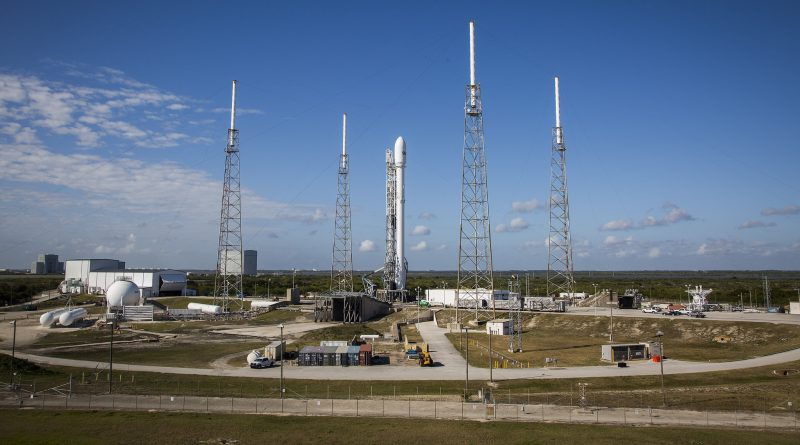Falcon 9 counts down to Night Launch & High-Energy Landing Attempt at Sea
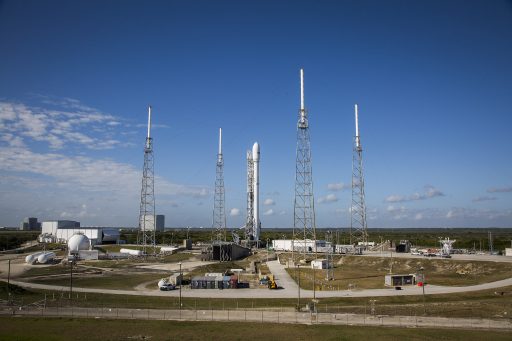
SpaceX is working towards a night launch of the company’s Falcon 9 rocket in the early hours on Friday to deliver to orbit the JCSat-14 commercial communications satellite for Japanese satellite operator Sky Perfect JSAT. Liftoff is set for a two-hour launch window opening at 5:21 UTC (1:21 a.m. local time Friday).
This launch marks the fourth for the upgraded Falcon 9 FT rocket with three successful missions already under its belt as well as two successful booster landings on land and at sea.
Thundering off from Florida’s Space Coast, the 70-meter tall Falcon 9 will light up the night skies as it turns to the south-east to take the standard route to Geostationary Transfer Orbit. With a mass of 4,700 Kilograms, the satellite is near the upper end of what Falcon 9 can lift into orbit while preserving sufficient propellant for an attempt to land the first stage booster on the Autonomous Spaceport Drone Ship – creating another high-energy return that SpaceX is eager to master for future routine landing-to-reflight turnarounds.
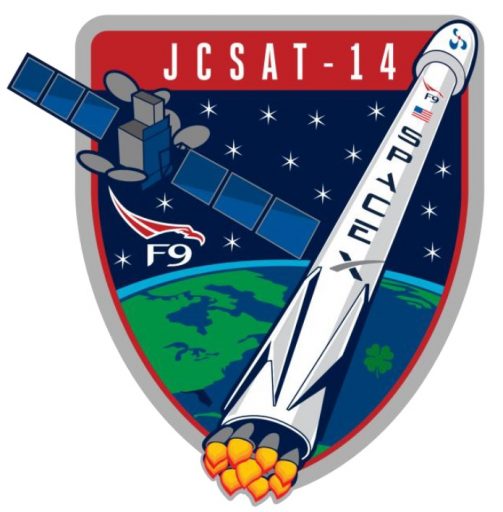
The first stage will be on duty for just over two and a half minutes, firing its nine Merlin 1D engines to accelerate the vehicle to a speed exceeding six times the speed of sound. Separation of the stages will mark the start of the first stage’s return adventure, heading towards a high-energy re-entry as fuel margins do not permit a boost-back or braking maneuver prior to re-entry, creating a particularly challenging environment considering re-entry temperatures.
A short re-entry burn with three engines will slow the booster down and shield its aft section ahead of a two-minute atmospheric descent during which the four actuated grid fins will keep the stage on course to begin its critical landing burn. In the last high-energy return on the SES-9 mission, Falcon 9 survived re-entry and successfully started its three-engine do-or-die landing maneuver, but ran out of fuel in the middle of the burn causing a hard impact on the Drone Ship leaving a hole in the steel deck.
Although hopes for success in Friday’s landing are low, SpaceX aims to gather more data for fine-tuning of the landing sequence for future missions that are particularly low on fuel. If successful, landing would occur just over eight and a half minutes after liftoff, 660 Kilometers from Cape Canaveral.
>>Falcon 9 FT Technical Overview
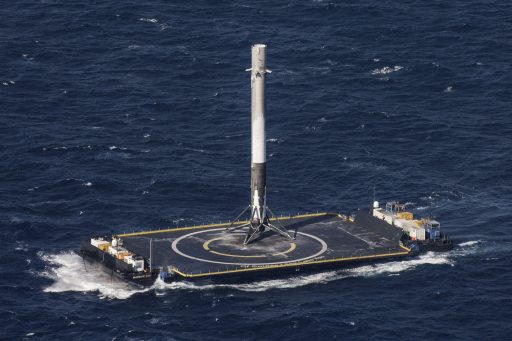
SpaceX currently has an inventory of two returned boosters – the first stage from the inaugural flight of the Falcon 9 Full Thrust Version in December that returned to Cape Canaveral in a milestone land-based landing, and the SpX-8 Core Stage that became the first successful Falcon 9 recovery at sea in early April. Lessons learned from these two successful landings will help SpaceX in perfecting the return sequence for high-energy missions, though a number of failures are still to be expected before landing rockets at sea will become a routine operation.
For the Falcon 9 second stage, the job will consist of two burns of its MVac engine, the first to put the stack into a slightly elliptical parking orbit and the second after a coast phase to raise the high point of the orbit to Geostationary Altitude. Separation of the JCSat-14 satellite is planned 32 minutes after liftoff on a mission lasting at least 15 years as part of JSAT’s satellite fleet.
No details on the target orbit for this mission were released in the days ahead of launch.
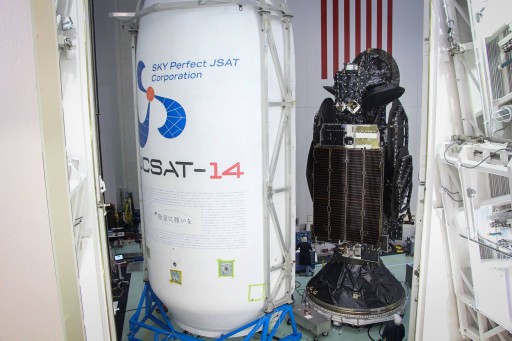
Destined for a position at 154°E, JCSat-14 will deliver flexible communications services with a payload comprised of 26 C- and 18 Ku-Band transponders covering a wide area stretching from Russia over Asia and the Pacific Region to the island of Hawaii.
The Ku-Band system will service customers in Asia, Russia, Oceania and the Pacific Islands. These services include high-speed connectivity for maritime, aviation and resource exploration users. Spotbeam Ku coverage over Japan and the Asia-Pacific region will enable high-capacity communications. TV Broadcast, mobile communications and data networks services will be delivered by the C-Band payload for a wide coverage area stretching from Russia to Hawaii.
The launch had to be pushed from Thursday to an early Friday target due to persistent thunderstorms with high winds and hail moving over the Cape throughout the day on Wednesday. Inclement weather conditions associated with a frontal boundary passing over the area were expected to prevent Falcon 9 rollout and raise to vertical operations from going ahead at the planned schedule, prompting managers to call a 24-hour delay.
Friday’s launch window stretches from 05:21 to 07:21 UTC and a backup opportunity has been secured for Saturday with an identical window. Weather for both days is expected to be almost pristine as cooler and drier conditions settle over Cape Canaveral after the front moves out to the south. Winds will be gusty throughout the day, but diminish after sunset, leaving only a small chance of ground winds violating launch criteria. Forecasters issued a chance of over 90% for cooperative weather for either of the two windows.
Looking at good weather and a healthy vehicle, having passed its Static Fire Test on Sunday, SpaceX headed into launch operations on Thursday – moving the Falcon 9 rocket from the hangar over to the launch pad. Being placed in its vertical launch position in the morning hours, Falcon 9 was ready to head into its lengthy countdown operation in the afternoon, local time.
Countdown & Launch Overview
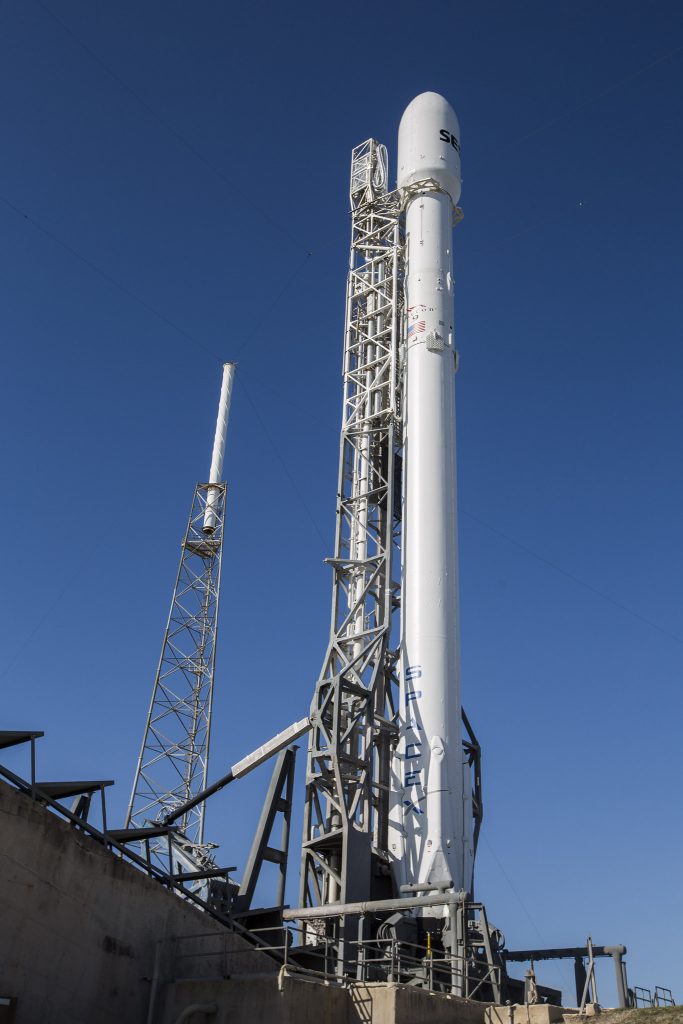
Standing 70 meters tall atop its launch pad at Space Launch Complex 40, a former Titan launch site, the Falcon 9 rocket is powered up several hours ahead of the expected T-0 time to head into its lengthy countdown. After detailed checkouts of the rocket and all ground systems, teams will make the final hands-on work to put all facilities at the pad in the appropriate configuration for launch. With around four hours to liftoff, Air Force Range Controllers will take up station at the Morrell Operations Center to begin monitoring the clearance of the launch corridor.
Once fully checked out, Falcon 9 begins its tanking sequence that – owed to the use of densified propellants – is much more complex than that for previous launchers. The SpaceX Launch Team will go through the poll for a GO/No GO for propellant loading at T-38 minutes followed by the initiation of the Automated Countdown Sequence at T-35 minutes, marking the start of a fast-paced fueling sequence.
The tanks of the two-stage rocket will be chilled down before propellants start flowing, beginning with Kerosene loading at T-34:30 followed by the initiation of LOX flow into the first stage at T-33:30 and the second stage just 19.5 minutes ahead of liftoff.
Due to the use of sub-cooled propellants, SpaceX has to ensure that the tanks remain in a predictable condition, avoiding significant thermal gradients from building up and keeping the tanks at flight mass which is particularly important for missions limited by vehicle performance.
To make sure propellants inside the tanks remain at liftoff mass, SpaceX implements a new rapid propellant loading sequence, filling the Falcon 9 with over 500 metric tons of LOX and RP-1 in less than half an hour – no small feat as shown by the issues encountered in the run-up to the first Falcon 9 FT launch that required teams to implement a number of modification to perfect the LOX loading operation.
In the last hour of the countdown, Falcon 9 receives its updated flight software including the parameters for its landing attempt. The JCSat-14 satellite will be verified to be on internal power and in flight mode before Falcon 9 heads into the business end of the countdown.
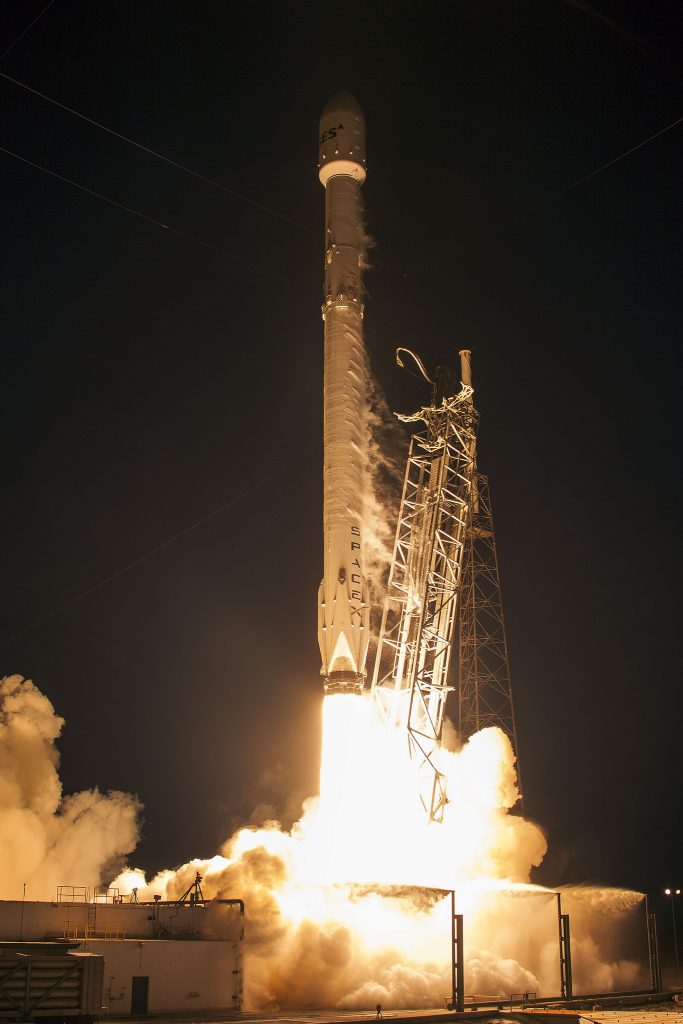
The last ten minutes of the countdown are handled by computers, putting the launch vehicle and ground systems through thousands of steps to transition the Falcon 9 to its autonomous launch configuration. At T-10.5 minutes, the Merlin 1D engines on the first stage will begin their chilldown sequence by opening LOX pre and bleed valves to get ready for start, also setting up the TEA-TEB ignition system. The two Strongback cradles will open and the large support structure will retract to its launch position three and a half minutes before blastoff. Liquid Oxygen loading will close out at T-2 minutes and 40 seconds on the first stage and right at the T-2-minute mark on the second stage, coinciding with Falcon 9 going to internal power.
A final Status check with the Launch Director occurs at T-90 seconds and Falcon 9 assumes full control of the countdown at T-1 minute, starting the last steps prior to ignition.
Three seconds ahead of liftoff, the nine Merlin 1D engines will be ignited using a pyrophoric mixture that initiates the combustion process before propellants are injected into the engines that will each soar up to a total thrust of 735 Kilonewtons. Computers will monitor the start-up of the engines to ensure a total liftoff thrust of 694 metric ton-force is achieved before Falcon 9 is committed to launch.
Rising from its pad under the loud thunder of its nine engines, Falcon 9 will climb vertically for around 20 seconds, clearing the tower. The pitch and roll maneuvers start a short time into the flight to allow Falcon 9 to fly to the south-east, departing the Space Coast and lighting up the night skies.
Heading uphill, Falcon 9 will break the sound barrier about 70 seconds into the flight and encounter Maximum Dynamic Pressure around 80 seconds after liftoff, throttling down its engines for approximately 20 seconds around MaxQ.
MECO, Main Engine Cutoff, is expected two minutes and 38 seconds into the mission, leaving the first stage with a sufficient reserve in propellant for its adventurous return to Earth. Three seconds after engine shutdown, the pneumatic stage separation system will be initiated to cut the connection between the two stages and push the first stage away to clear the way for the ignition of the MVac engine on the second stage.
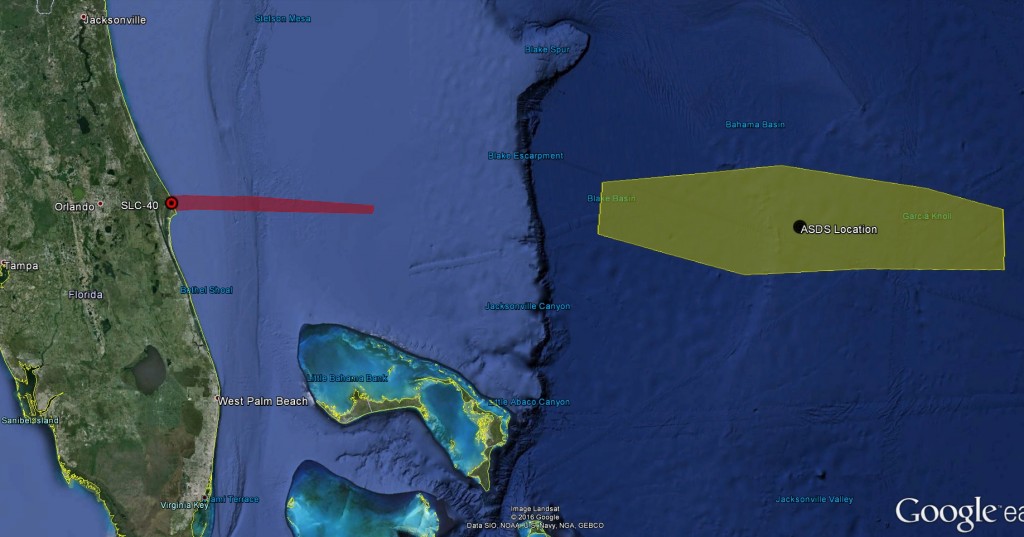
Coming to life at T+2:49, the upgraded Merlin 1D engine of the second stage will soar to a thrust of 95 metric-ton-force to fire for six minutes and four seconds to push the stack into a Parking Orbit. Approaching the end of its burn, the second stage will enable Terminal Guidance Mode to ensure an on-target insertion followed by the deactivation of the Flight Termination System which will no longer be required with the stage at orbital velocity.
As the second stage arrives in orbit, about 200 Kilometers below, in the Atlantic Ocean, the Autonomous Spaceport Drone Ship will be ready to catch a Falcon 9 Booster. Hopes of achieving a successful landing are rather slim however, due to the energy involved in this mission and the limited propellant reserve on the first stage. However, data gathered during the hard landing of SES-9 may contribute to giving this mission slightly better odds at making it back to Earth in one piece.
Giving the second stage as much energy at separation as possible will enable the satellite to be delivered closer to its operational orbit, but it will lessen the chances for the first stage to make it through its return sequence intact.
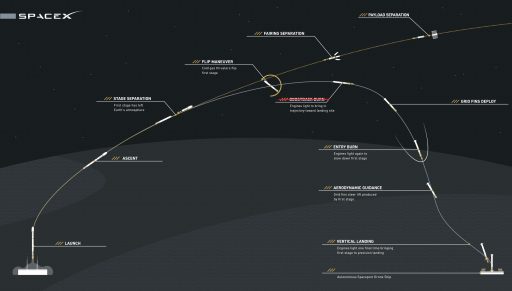
Separating at a high speed well over Mach 6, the first stage will complete an initial maneuver immediately after separation, flying out of the second stage plume and flipping 180 degrees to point the main engines to the direction of travel.
No propellant is available for a braking or boost-back maneuver and the first stage will continue on a ballistic arc until hitting the atmosphere, creating a large downrange travel distance, aiming for the Drone Ship stationed 660 Kilometers from the launch pad.
Next, the booster deploys its four aerodynamic grid fins for atmospheric descent that is preceded by a short burn around 70 Kilometers in altitude to use the engine plume to shield the aft section of the rocket from excessive aerodynamic forces. With the four grid fins deployed, Falcon 9 is set for a almost two minutes of atmospheric descent during which the fins provide roll, pitch and yaw control. The fins will be used to correct the final cross-track errors as the first stage starts homing in on the exact coordinates of the Drone Ship.
If still in an operational condition after a high-energy re-entry, the first stage will re-start its engine(s) and deploy its landing legs in the final seconds of flight. This mission is likely to repeat the three-engine landing burn used for SES-9 given the tight margins and SpaceX’s desire to master this type of landing for future flights with similar propellant restrictions. A burn with three engines cuts energy losses encountered during a significantly longer burn when only the center engine is in action, thus making it the favored choice for fuel-limited landings.
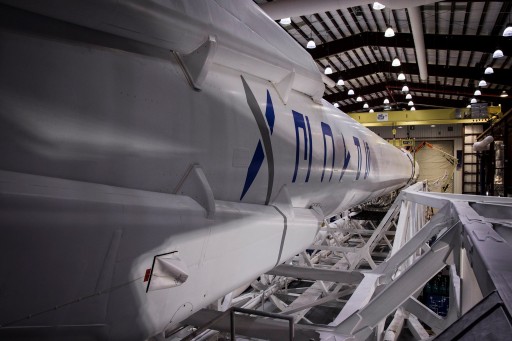
Making a hoverslam landing that leaves no room for error, the booster will hopefully come to rest in an upright position to achieve SpaceX’s first landing after a high-energy return. Should the landing succeed, teams will conduct a remote survey of the booster and safe its propellant systems before engineers can return to the ASDS and secure the first stage for its return to shore.
After the first stage arrives back on Earth, the focus will very quickly shift back to the second stage, carrying out the primary mission of lifting JCSat-14 into Geostationary Transfer Orbit. Boosting the stack into a preliminary parking orbit, the second stage will be tasked with an 18-minute coast phase so that the second burn could place the high-point of the orbit over the equator, easing the process when transitioning the satellite to a Geostationary Orbit.
The MVac engine is expected to re-start 26 minutes and 27 seconds after liftoff for a burn of 59 seconds to sufficiently raise the apogee of the orbit. No target orbit parameters were released ahead of Thursday’s countdown.
JCSat-14 is set for separation from the launch vehicle 32 minutes after launch to mark the completion of the fourth flight of the Falcon 9 FT.

